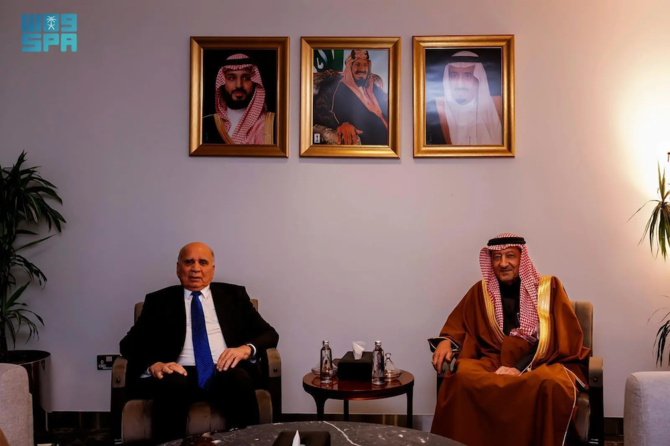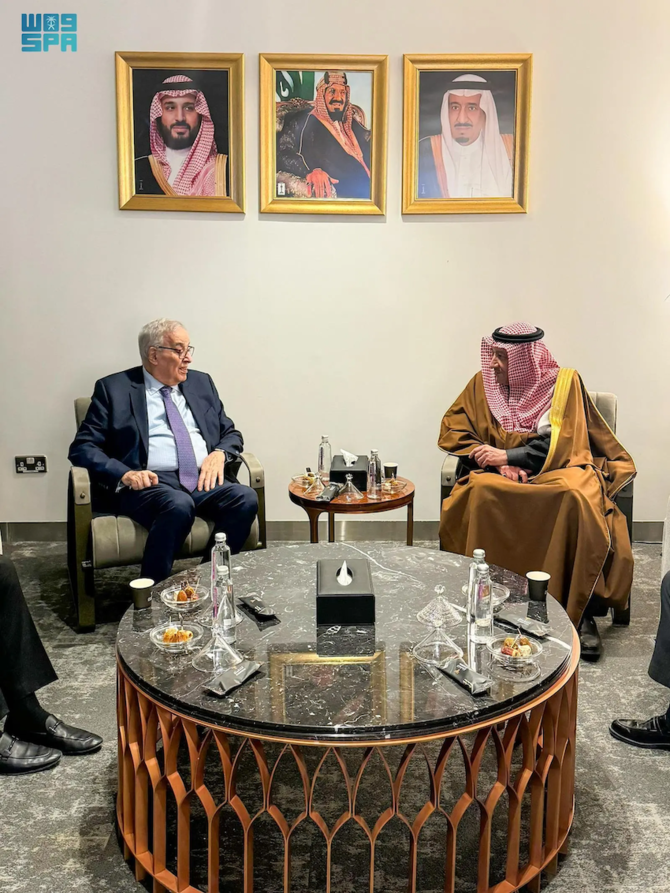RIYADH: Saudi Foreign Minister Prince Faisal bin Farhan on Sunday called for the lifting of sanctions on Syria, saying the curbs hindered the country’s rebuilding and development.
He made the call at a press briefing after high-level meetings on Syria in Riyadh.
“We stressed the importance of lifting unilateral and international sanctions imposed on Syria, as their continuation hinders the aspirations of the Syrian people to achieve development and reconstruction,” Prince Faisal said.
The Riyadh meeting on Syria was attended by representatives of a number of countries from the Middle East and beyond, including Syria, Jordan, Lebanon, and Turkiye, as well as the UK and US. Officials from the GCC, EU and UN also took part.
Recently appointed Foreign Minister Asaad Hassan Al-Shaibani represented Syria’s leadership at the meeting.
In his remarks to the press, Prince Faisal said that participants welcomed the positive steps made by the new Syrian administration, such as embracing “joint dialogue and commitment to combat terrorism.”
The Saudi foreign minister said the meeting sought to provide support and advice to the new leadership in a way that respects their independence and takes into account that the future of the country is for the Syrian people.
“We also stressed the importance of continuing humanitarian and economic support in the field of the Syrian state, achieving stability, reconstruction, and preparing the appropriate environment for the return of the Syrian refugees,” he added.
Prince Faisal said that the Kingdom is keen to continue coordinating with and standing by Syria and its people.
Officials from the EU and Germany spoke about the state of sanctions imposed on the country.
Kaja Kallas, EU commissioner for foreign affairs, said in a media briefing that she will discuss ways to ease sanctions in a meeting with European foreign ministers on Jan. 27.
The EU is prepared to take further steps if progress is positive, but could also reverse course if it is not, she said.
Kallas cited three factors the EU will take into account: inclusivity of different groups in the government, “no radicalization,” and the inclusion of women in the process.
The EU, along with the US and other nations, imposed heavy sanctions on Syria in 2011.
Meanwhile, German Foreign Minister Annalena Baerbock called for a “smart approach,” saying: “Sanctions against Assad’s henchmen who committed serious crimes during the civil war must remain in place.”
The German foreign minister said that the internal process for Syria must not be disrupted, adding that “all neighboring states must respect Syria’s territorial integrity and sovereignty.”
Baerbock also announced that Germany will spend €50 million ($51.3 million) on humanitarian aid for Syria, and added: “The key to a safe Syria lies in the region, but first of all in the hands of all Syrians.”
She underlined that “joint support is now essential,” and said that Germany will continue to stand with the people of Syria to contribute to a “peaceful transition for everyone.”
The foreign minister highlighted Germany’s focus on “preventing the resurgence of an Islamic state, something we expect from the new leadership in Damascus.”
In a message released to the media, Saudi Arabia affirmed its support for the Syrian people and their choices at this “critical juncture in Syria’s history.”
The Kingdom called on the international community to stand by and collaborate with the Syrian people “in all that serves the country.”
Saudi Arabia also condemned Israel’s decision to expand settlements in the occupied Golan Heights and called on the global community to denounce Israeli violations of Syria’s territorial integrity, reaffirming that the area is Syrian Arab land under occupation.



































